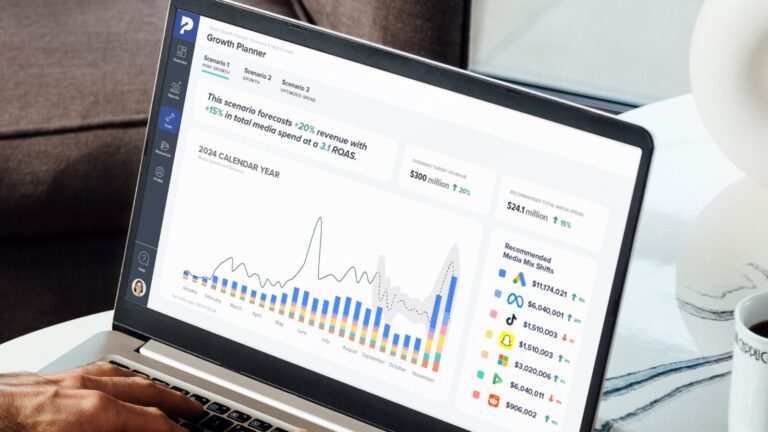Data, data, data. We have so much, but do we know the full power of all the information that we have at our fingertips? With the increasing complexity and sheer size of data sets and marketing capabilities, artificial intelligence (AI) and its subsets (natural language processing, computer vision, and machine learning) present an efficient way to organize and utilize all of this data to use for gathering insights from digital analytics. These subsets have become increasingly popular over recent years for improving ROI and increasing overall profits due to their accurate predictive nature. Here are just some of the ways organizations are already leveraging machine learning solutions.
Natural Language Processing
If you have ever used a chatbot or Siri, you have been exposed to natural language processing (NLP). The human language is extremely complex and varied. Although in theory language is structured, in reality, syntactic, semantic, and phonetic variation exist within languages, meaning that it can be difficult to assign set goals for textual or verbal extraction. In this case, NLP is important because we can ‘teach’ a program to identify syntactic, semantic, and phonetic patterns to organize data in that way.
Why do we care?
Processing millions of words would take people far too long when we can instead train a program to structure data in a form that we can use to inform marketing strategies.

Computer Vision
Computer vision is changing not only the way we shop, drive, and log into devices, but it is changing the way we market as well. One of the major ways we can utilize vision programs is by implementing contextual ads. For example, say you were advertising a yoga studio. Third-party partners can scan sites to look for images similar to yoga, for example a site displaying yoga poses. They do this by using image segmentation (abbreviated process seen below). At this point, an ad for your yoga studio can be placed, ensuring that you are hitting a more relevant audience than you might with strictly audience targeting.
Another use for computer vision is for social listening. These types of programs can identify when your brand has been mentioned or its photos have been used which can give you more insight on how the brand is doing. Computer vision is relatively new in the marketing space and is by no means perfect, as segmentation of an image is much harder than segmentation of a word. Currently, initiatives leveraging computer vision are being pioneered by companies like GumGum and Vibrant Media. Overall, trends in advertising do not indicate that this type of advertising will replace contextual and user targeting so much as it will be an additional option for targeting. Audience and contextual targeting will still be crucial due to reliability of 1st and 2nd party data.
Why do we care?
As marketing professionals, we must move quickly to capture the right audience at the right time. With the visual nature of our society, we can use the abilities of vision technology to diversify our targeting options when it comes to digital marketing.

Machine Learning
While machine learning and NLP are very similar in the way that they mine through data, the major difference is that NLP is linguistically focused, meaning that the data must be structured first. However, machine learning focuses more on the statistical side of processing structured data. Machine learning is used within NLP practices frequently. The most common way we see machine learning being used in marketing pertains to targeting curation and bidding strategies. For bidding, the days of manual selling and buying of inventory are numbered. We now use machine learning algorithms as much as possible to determine the most optimal and efficient bid for the inventory.
This has gone even further with the development of bid multipliers within the programmatic landscape. You can set up multipliers which, if a certain aspect is called (device type, audience, geo, etc.), can exceed your max set bid by a certain percent if the algorithm detects that the inventory that you’re bidding on is very likely to outperform the KPI.
As for audiences, these algorithms can make audience segments based on patterns seen. For example, this is how Facebook lookalike audiences are created. After the algorithm determines the audience segment, it can look for patterns seen outside of that segment (instances that occur less often) and determine that it could be a lookalike and be a predicted close performer of the earlier determined segment.
Why do we care?
Machine learning gets us closer to an efficient bid and to a more relevant audience. With the marketplace becoming more and more competitive due to additional levels of bidding (preferred, header bidding, etc.) as more brands leverage digital media, we must do what we can to remain competitive yet cost-effective with our bidding and audience strategy.

The future is full of opportunity for AI and marketing. One interesting example which already exists is the use of geotargeted advertising within cars: with the creation and further development of self-driving cars, consumers will be able to see geo-relevant advertising while in the car.
Looking into the future, there will be more automated bidding options. Although bidding is already automated to a certain extent, advertisers are somewhat limited in defining KPIs that the algorithm will optimize toward. We might see something that allows an algorithm to plan and set bids for more specific KPIs beyond CPMs and CTRs. With all of the granular data that we will be able to acquire and organize with the use of AI, further customization of ads will be possible. Using dynamic creative and data, we will be able to display creative that resonates more closely with the target audience.
Overall, as marketers, we need to take full advantage of the technological developments in front of us to make informed, efficient, and effective marketing decisions.
Further Reading:
Forbes, TechEmergence, and AI4Marketing




